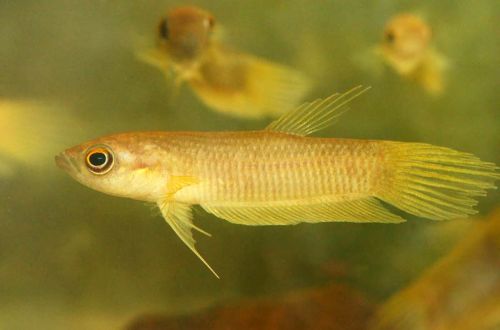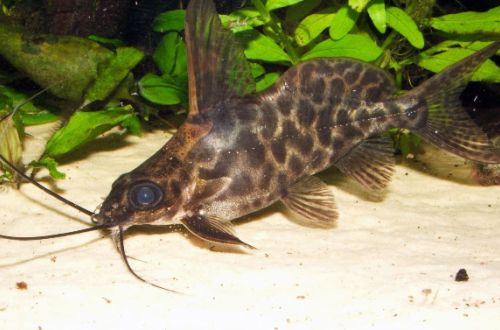
betta midas
Betta Midas or Cockerel Midas, scientific name Betta midas, belongs to the Osphronemidae family. The name alludes to the color of this goldfish and refers to the mythical ancient Greek king Midas, whose touch turned everything into gold. It is considered demanding in terms of maintenance, but experienced aquarists will not cause great difficulties, which cannot be said about beginners. Compatible with many other species, although it belongs to the group of fighting fish.

Contents
Habitat
It comes from Southeast Asia from the Indonesian part of the island of Borneo. Inhabits the lower basin of the Kapuas River in the province of West Kalimantan. The typical habitat is peat bogs located among tropical rainforests. The water has a rich brown color due to the high concentration of tannins released as a result of the decomposition of fallen plant material.
Brief information:
- The volume of the aquarium – from 70 liters.
- Temperature – 22-28°C
- Value pH — 3.5–6.5
- Water hardness – 1–5 dGH
- Substrate type – any dark
- Lighting – subdued
- Brackish water – no
- Water movement – little or no
- The size of the fish is about 6 cm.
- Food – any food
- Temperament – peaceful
- Content – in a pair, a group of relatives and together with other species
Description
Adults reach a length of about 6 cm. As mentioned above, the fish are yellow or golden in color. Males, unlike females, look slimmer, and the fins are elongated, the head is larger.
Food
The basis of the diet in nature are small insects and other aquatic invertebrates. Acclimatized fish quickly adapted to accepting alternative foods once they were found to be edible. Bettas raised in captivity are already accustomed to dry, frozen and live foods popular in the aquarium trade. Specialized Betta products from many manufacturers are a good choice.
Maintenance and care, arrangement of the aquarium
The optimal size of the aquarium for a pair or a small group of these fish starts from 70-80 liters. The ideal design is one that is as close as possible to the natural habitat, i.e. tropical swamps. Betta Midas will look most harmoniously among the numerous natural snags and fallen leaves of some trees against the background of a dark substrate. Substances released by plant material will give the water a characteristic dark tint. Suspension formation is possible. The lighting is subdued. However, a biotope recreated in this form is difficult to maintain and not any equipment will work normally in such an environment. For example, most filters will clog quickly. In addition, the appearance will not delight many aquarists. Males can live in other environments, especially those that live in aquariums for generations, with clean, clear water, the main thing is that the hydrochemical composition is appropriate and there are several places for shelters.
Behavior and Compatibility
Despite its belonging to the fighting fish, it has a completely peaceful disposition both in relation to its relatives and to other species. There is a certain competition between males for position in the intraspecific hierarchy and for the attention of females, but the rivalry is limited to a “demonstration of strength” and it does not come to skirmishes.
Breeding / breeding
In favorable conditions and when receiving a balanced diet, spawning is not uncommon. With the onset of the breeding season, the dominant male and one of the females form a temporary pair. After a long courtship, followed by “hugs”, when the fish cuddle, wrapping themselves around each other, spawning occurs. The male picks up all fertilized eggs and takes them into his mouth, where they will stay for the entire incubation period – 15–20 days. Such gestation is characteristic of many Betta fish and ensures high survival of offspring at the first and most vulnerable stages of development. When the fry begin to swim freely, the parents lose interest in them, but at the same time they can be together. Adult fish are not prone to eating their young.
Fish diseases
The cause of most diseases is unsuitable conditions of detention. A stable habitat will be the key to successful keeping. In the event of symptoms of the disease, first of all, the quality of the water should be checked and, if deviations are found, measures should be taken to correct the situation. If symptoms persist or even worsen, medical treatment will be required. Read more about symptoms and treatments in the Aquarium Fish Diseases section.





